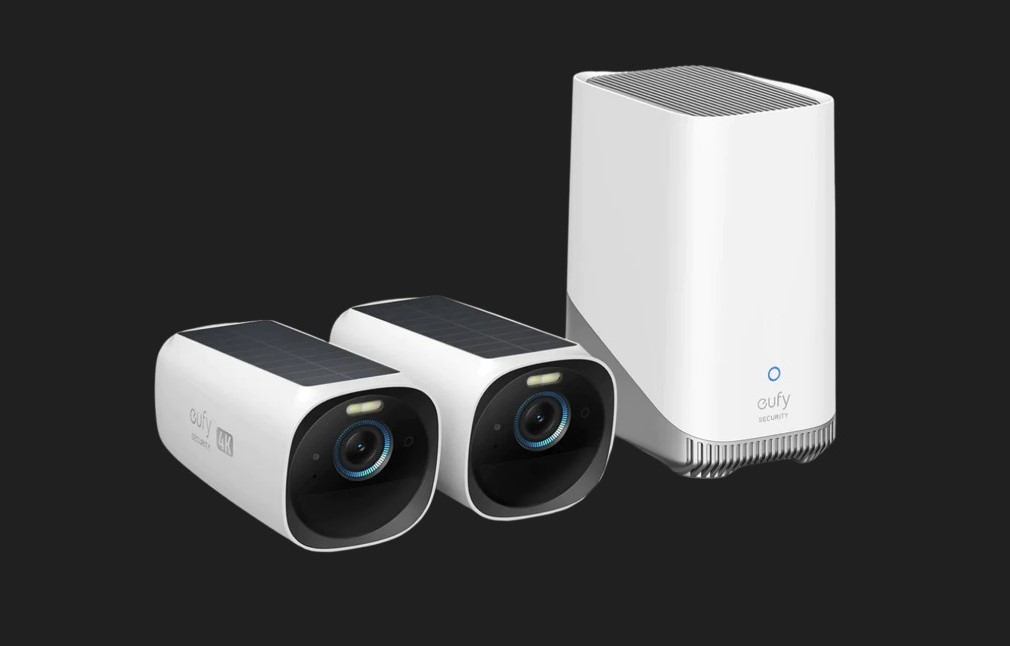Gadget of the Week
Gadget of the Week: Security goes solar
Security cameras are no longer at the mercy of dodgy power supplies, thanks to the eufyCam 3 Ultra HD solar cam, writes ARTHUR GOLDSTUCK.
Not too long ago, the number one concern of South African howeowners was crime.
Then came loadshedding. Then came crimes committed during loadshedding. After all, reason the criminals, if there is no power, there is also likely to be no security. In these times, security cameras without their own batteries fail the test of keeping a watchful eye, or of allowing residents to monitor who comes to the gate or door.
An obvious solution is security cameras with long-lasting batteries, such as Ring security cameras. The unit we tested previously had promised more than 6-months use on a single charge, but over time this proved to be somewhat optimistic: the battery pack had to be removed and charged back up again every few weeks.
Much depends on how actively one monitors the camera via smartphone, how often it its video capture function is triggered by movement, and how regularly its automatic lights are triggered.
A more obvious, if uncommon, solution is using solar power. One can, for example, attach a small solar charger to the Ring. However, it adds to the amount of kit being deployed, and the complexity of maintaining it.
Eufy, part of the Anker group, has now brought the obvious to market: the eufyCam 3, a solar-powered wire-free security camera supporting 4K Ultra HD video, along with a built-in long-life battery life.
Because the eufyCam 3 records in 4K Ultra HD, it provides incredibly sharp and detailed images, which is in turn especially useful for identifying people and objects at a distance. Like the Ring, it also has a built-in spotlight that can be turned on remotely at night to light up the area around the camera.
The camera is powered by a rechargeable battery that promises a year’s life on one charge – very specific conditions apply there – but it also has a built-in solar panel that keeps the battery charged.
The eufyCam 3 comes as a 2-camera set, with a HomeBase 3 data hub, mounts, charging cable, and AC power adapter. All of that tells you it is not an entirely wireless system, but at least no wires need to be run from the cameras. The entire set-up can be monitored from a smartphone app.
The cameras detect motion and send alerts when it detects something, which can be anything from a cat to a car. It can, however, be customised to detect motion only at a certain height, in designated areas or at specific times.
It includes two-way audio, allowing one to use the camera’s microphone and speaker to communicate with – or frighten off – people or animals on the other side of the camera. A built-in siren also does the trick.
It offers face recognition functionality, allowing one to set faces of family members or friends that it can recognise, and distinguishing between these and strangers. It uses machine-learning artificial intelligence that it claims to offer 99% accurate recognition.
Unlike many alternatives, it doesn’t store recordings in the cloud, meaning no subscription is need. Instead, it stores recordings locally on a 16GB encrypted hard drive. The data hub can support up to 16 TB of additional memory using an external hard drive.
It connects to the Eufy Security app, available for iOS and Android devices, through which one can watch the camera’s feed live, set up motion detection alerts, and use two-way audio. It also allows one to share live views and recordings with other users. A built-in history feature allows one to view recordings from the past.
The IP65 camera is weatherproof and can withstand rain, snow, and extreme temperatures.
What does it cost?
R9,299 from Takealot.com.
Why does it matter?
The eufyCam 3 uses a proprietary self-learning AI system called BionicMind, which learns to recognise people, objects and pets. Eufy claims that, over time, it will deliver 99% accuracy. How does it learn? Every time someone passes through the camera’s field-of-view, their face, body and movements are sent to the HomeBase. It also captures and classifies past video footage by family members, friends or frequent visitors. The more information the data hub receives, the more precise its analysis becomes, as machine learning feeds the BionicMind algorithms.
What are the biggest negatives?
- The field of view is wide angle, buy only to 135 degrees. However, the dual camera system fills the gaps.
- Limited mounting options out of the box. The screw mounts are designed for doors, not gates
What are the biggest positives?
- Year-round power, with a built-in solar panel ensuring uninterrupted use.
- Ultra high-resolution video capture, with infrared and colour night vision.
- Extensive management and control of the device via the app.
* Arthur Goldstuck is founder of World Wide Worx and editor-in-chief of Gadget.co.za. Follow him on Twitter and Instagram on @art2gee



















